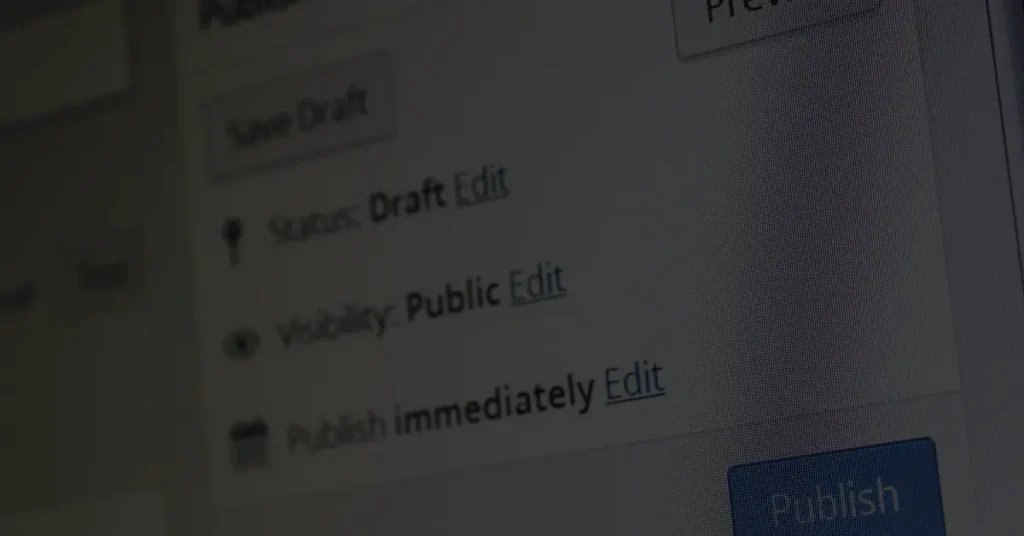How to install a WordPress plugin?

WordPress is a popular content management system (CMS) that powers millions of websites worldwide. One of the reasons for its popularity is the ability to extend its functionality through plugins. WordPress plugins are additional software components that can be installed and activated to add new features or enhance existing ones on your website. However, it’s crucial to choose and install a WordPress plugin carefully to ensure compatibility, security, and optimal performance.
In this article, we will guide you through the process of installing a WordPress plugin and provide you with essential tips to make the most out of them.
Introduction
Having the right set of plugins can greatly enhance your website’s functionality and user experience. Whether you want to create a contact form, optimize your site for search engines, or add social sharing buttons, there is likely a plugin available to help you achieve your goals.
What is a WordPress Plugin?
A WordPress plugin is a piece of software that extends the core functionality of WordPress. It adds specific features or enhances existing ones, allowing you to customize your website without the need for coding. Plugins can be created by WordPress developers and made available for users to download and install.
Benefits of Using WordPress Plugins
Using WordPress plugins offers several advantages for website owners and developers:
-
Increased Functionality: Plugins provide a wide range of features and functionalities that are not included in the core WordPress installation. From adding e-commerce functionality to improving SEO, there is a plugin for almost every need.
-
Easy Customization: Plugins make it simple to customize your website without extensive coding knowledge. You can add elements like sliders, image galleries, or forms with just a few clicks.
-
Time and Cost Savings: Plugins save time and money by eliminating the need to develop custom functionality from scratch. You can leverage existing plugins to achieve the desired results quickly.
-
Community Support: The WordPress community is vast and active. Many plugins are well-maintained and receive regular updates, ensuring compatibility with the latest WordPress version and offering support in case of issues.
Understanding Plugin Types
Before diving into the installation process, let’s understand the different types of WordPress plugins available:
a. Free Plugins
Free plugins are available in the official WordPress plugin repository. These plugins undergo a review process to ensure quality and security. They are developed by the WordPress community and cover a wide range of functionalities.
b. Premium Plugins
Premium plugins are developed by third-party companies or individual developers and are available for purchase. These plugins often offer advanced features, dedicated support, and regular updates. They are typically sold under a single-site or multi-site license.
c. Freemium Plugins
Freemium plugins are a combination of free and premium versions. The free version provides basic features, while the premium version offers additional functionality and support. Users can upgrade to the premium version if they require advanced features.
How to Choose the Right WordPress Plugin
Choosing the right WordPress plugin is crucial to ensure compatibility, security, and optimal performance. Consider the following factors before making a decision:
a. Define Your Needs
Clearly define the functionality you require from a plugin. Identify the specific features you want to add or improve on your website. This clarity will help you narrow down your search and choose the most suitable plugin.
b. Check Plugin Ratings and Reviews
Check the ratings and reviews of the plugin you are considering. Read user feedback to gauge the plugin’s performance, reliability, and user satisfaction. Look for plugins with positive reviews and a high number of active installations.
c. Consider Plugin Compatibility and Updates
Verify if the plugin is compatible with your WordPress version and theme. Outdated plugins can cause conflicts and security vulnerabilities. Additionally, ensure that the plugin is regularly updated by the developer to stay compatible with the latest WordPress updates.
d. Evaluate Plugin Support
Good plugin support is essential for resolving issues or answering questions. Check if the plugin developer provides support through forums, documentation, or a dedicated support team. Prompt and reliable support can save you a lot of time and frustration.
e. Assess Plugin Security
Security is a critical aspect of plugin selection. Verify that the plugin is developed by a reputable source and has a history of security updates. Avoid plugins that haven’t been updated for a long time or have a significant number of reported vulnerabilities.
Installing WordPress Plugins
Now that you understand the basics, let’s explore how to install WordPress plugins.
a. Installing Free Plugins from the WordPress Repository
Installing free plugins is straightforward using the WordPress dashboard:
- Log in to your WordPress admin panel.
- Navigate to “Plugins” > “Add New.”
- Search for the desired plugin using keywords or browse through the available categories.
- Click the “Install Now” button next to the plugin you want to install.
- Once the installation is complete, click the “Activate” button to activate the plugin.
b. Installing Premium Plugins from Third-Party Sources
To install premium plugins purchased from third-party sources:
- Download the plugin ZIP file from the source.
- Log in to your WordPress admin panel.
- Navigate to “Plugins” > “Add New.”
- Click the “Upload Plugin” button.
- Choose the ZIP file you downloaded and click “Install Now.”
- Once the installation is complete, click the “Activate” button to activate the plugin.
Activating and Configuring Plugins
After installing a plugin, you need to activate and configure it to work correctly:
- Go to the “Plugins” section in your WordPress dashboard.
- Locate the plugin you want to activate and click the “Activate” button.
- Depending on the plugin, you may need to configure its settings. Look for a dedicated “Settings” or “Configure” option in the sidebar or under the “Plugins” menu.
Managing WordPress Plugins
To ensure your website’s smooth operation, it’s essential to manage your plugins effectively.
a. Updating Plugins
Regularly updating your plugins is crucial to ensure compatibility, security, and performance improvements. Check for plugin updates in the “Plugins” section of your WordPress dashboard and update them as needed.
b. Deactivating and Deleting Plugins
If you no longer need a plugin or encounter conflicts, it’s recommended to deactivate or delete it. Deactivating a plugin disables its functionality, while deleting a plugin removes it from your website entirely.
c. Troubleshooting Plugin Conflicts
Sometimes, plugins can conflict with each other or your theme, causing issues on your website. If you experience problems after installing a plugin, try deactivating it to identify the conflicting plugin. If the issue persists, consider reaching out to the plugin developer or seeking assistance from the WordPress community.
Best Practices for Plugin Usage
To make the most out of WordPress plugins, follow these best practices:
a. Use Only Necessary Plugins
Avoid installing too many unnecessary plugins, as they can affect your website’s performance and security. Choose plugins that genuinely add value and remove any that are no longer needed.
b. Keep Plugins Updated
Regularly update your plugins to benefit from bug fixes, security patches, and new features. Outdated plugins may expose your website to vulnerabilities.
c. Regularly Back Up Your Website
Perform regular backups of your website, including the database and files. In case of any issues or conflicts caused by plugins, you can restore your website to a previous working state.
d. Test Plugins on a Staging Site
Before installing a new plugin on your live website, consider testing it on a staging site or local environment. This allows you to evaluate its impact and functionality without affecting your live site.
e. Be Mindful of Plugin Security
Choose plugins from trusted sources and keep an eye on their security track record. Remove any plugins that are no longer maintained or have reported security vulnerabilities.
Conclusion
WordPress plugins offer a powerful way to enhance your website’s functionality without coding knowledge. By understanding the different types of plugins, choosing wisely, and following best practices, you can leverage the benefits they provide. Remember to install and configure plugins carefully, keep them updated, and be mindful of potential conflicts or security issues.
FAQs
Q: Can I install multiple plugins at once?
Yes, you can install multiple plugins at once using the WordPress plugin installation interface. Simply search for the desired plugins and click the “Install Now” button for each one.
Q: Can I use plugins on a free WordPress.com website?
No, free WordPress.com websites have limited plugin support. To use plugins, you will need a self-hosted WordPress.org website.
Q: Are all plugins compatible with every WordPress theme?
Not all plugins are compatible with every WordPress theme. It’s essential to choose plugins that explicitly state compatibility with your theme or test them thoroughly before using them on your live site.
Q: How do I know if a plugin is slowing down my website?
If you notice a significant decrease in website speed after installing a plugin, it could be causing performance issues. You can use speed testing tools or deactivate plugins one by one to identify the culprit.
Q: Can I develop my own WordPress plugins?
Yes, you can develop your own WordPress plugins if you have coding knowledge or hire a developer to create custom plugins tailored to your specific needs.























